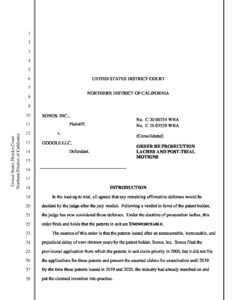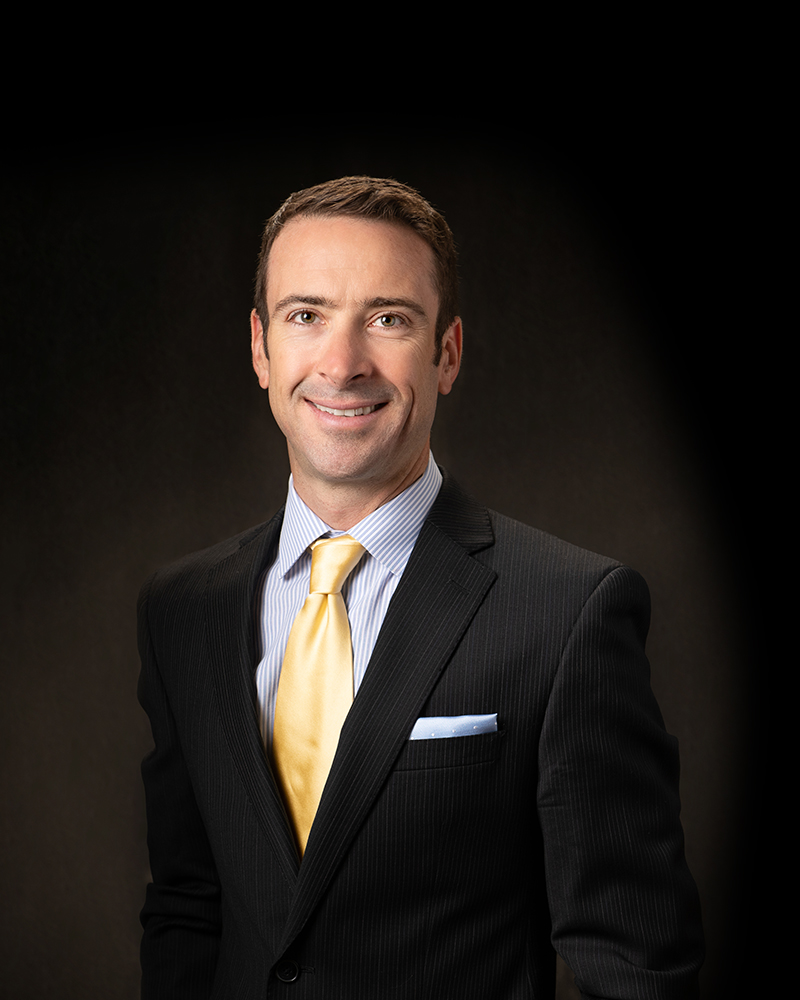By Michael J. Burleigh
In a recent decision, Sonos v. Google, Judge Alsup of the Northern District of California cast doubt on the commonly employed patent prosecution strategy of keeping at least one continuation application alive for years and pursuing specific portions of the originally disclosed subject matter as it becomes relevant in the marketplace. In the decision, Judge Alsup found Sonos’s asserted patents to be unenforceable under the equitable affirmative defense of prosecution laches.
To prove prosecution laches as a defense to patent infringement, an accused infringer must show: (1) the patent holder’s delay in prosecution was unreasonable and inexcusable under the totality of circumstances; and (2) the accused infringer suffered prejudice attributable to the delay. Cancer Rsch. Tech. Ltd. v. Barr Lab’ys, Inc., 625 F.3d 724, 728 (Fed. Cir. 2010). Accordingly, the doctrine of prosecution laches puts an additional, equitable burden on prosecution conduct beyond those imposed by statute or regulation.
Sonos emphasized at trial that each application in the string of continuations had been diligently prosecuted, but to no avail. The Court cast this aside and instead focused on the total time period from earliest priority date to issuance, ruling that “the patents issued after an unreasonable, inexcusable, and prejudicial delay of over thirteen years by the patent holder, Sonos, Inc.” (emphasis in original). Judge Alsup opined that “this was not a case of an inventor leading the industry to something new. This was a case of the industry leading with something new and, only then, an inventor coming out of the woodwork to say that he had come up with the idea first — wringing fresh claims to read on a competitor’s products from an ancient application.” Sonos Inc. v. Google LLC, 20-06754 WHA, 2023 WL 6542320 (N.D. Cal. Oct. 6, 2023).
Given the players and the amount in controversy, it seems very likely that this decision will be appealed. In a glimmer of hope for the continued viability of the serial continuation prosecution strategy, perhaps this decision could be recast as centering around the new matter issues that arose at trial. In addition to the thirteen year period between the first priority date and the issuance of the patents at issue, it became clear at trial that key portions of the specification that had been relied upon as support for the claims at issue had been added to the specification upon filing the continuation applications in 2019, under the guise of incorporation by reference of an appendix to the original provisional application. The appendix described a prior art system that also belonged to Sonos. However, it was uncovered at trial that the key subject matter had been removed from the appendix prior to the filing of the provisional. “Why did Sonos omit this language?” Judge Alsup asks rhetorically in the order. “Sonos, no doubt, saw the risk that its own product — the Sonos 2005 prior art system, released in January 2005 — would have served as invalidating prior art,” is the answer Judge Alsup gives. Thus, in addition to ruling that the patents were unenforceable under patent laches, the Court ruled the patents invalid on account of new matter. A ruling from the Federal Circuit emphasizing the new matter issue and de-emphasizing the patent laches issue might go a long way to clearing up the clouds of uncertainty gathering over the serial continuation strategy.
We will continue to follow this issue as it unfolds.


